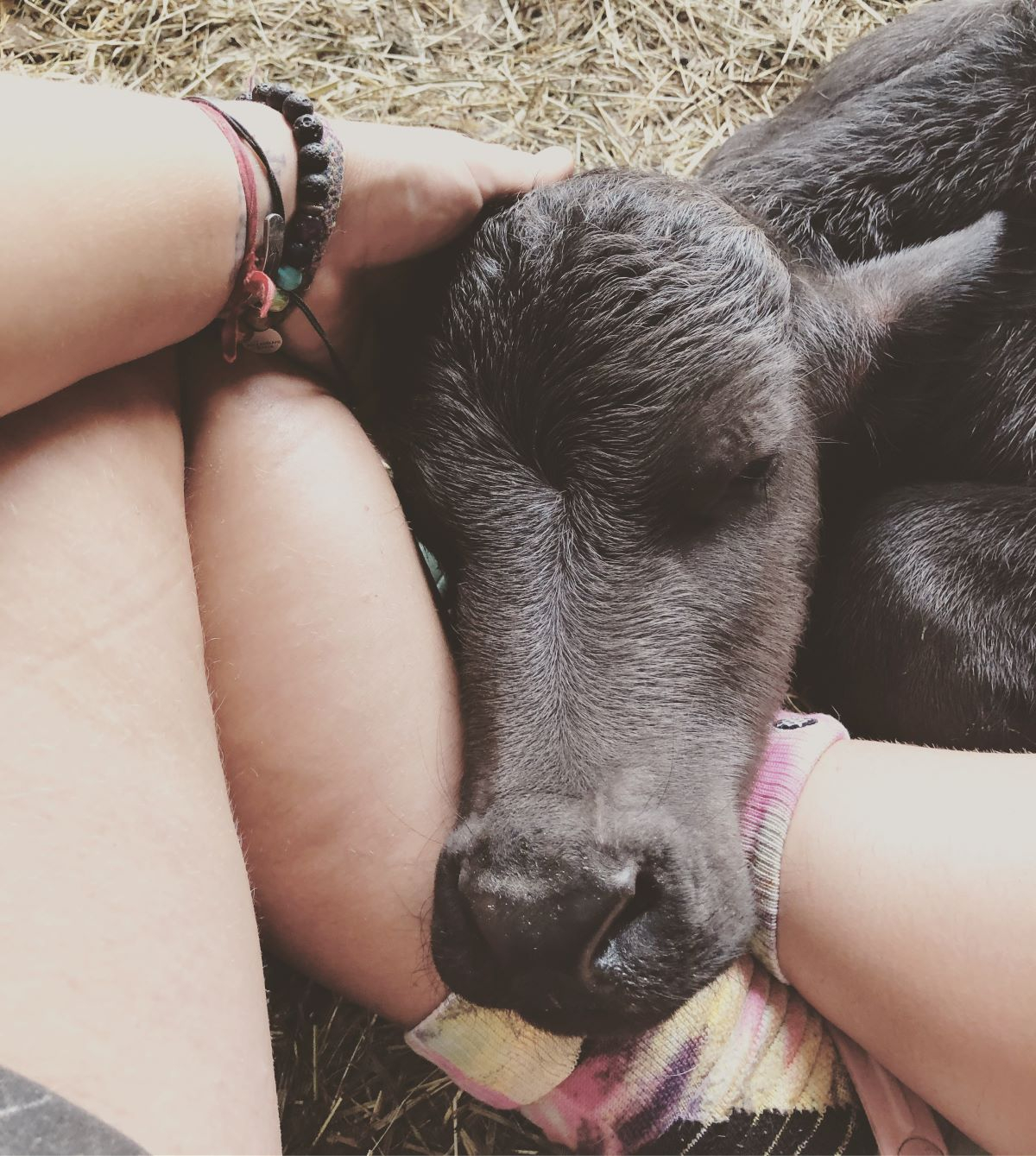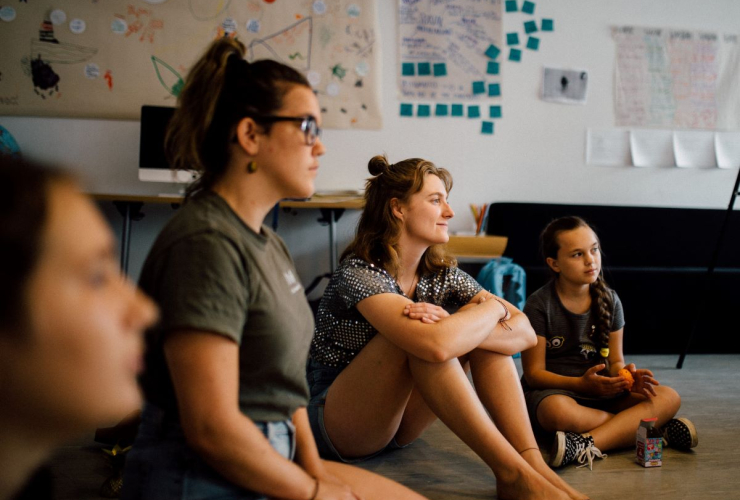As part of a series highlighting the work of young people in addressing the climate crisis, writer Patricia Lane interviews Jeanette Heffernan, a young farmer committed to sustainable land and animal husbandry practices.
Author’s statement
With the realities of climate change, inequality and the pandemic, one could be forgiven for choosing despair. But the world is no better off for that, so I choose to study hope, a discipline that requires practice. Here, treat yourself to a few minutes of joy in the next instalment of my series profiling amazing — and yes, hopeful — young people contending successfully with the climate justice crisis in Canada.
Two hours east of Toronto near a little town called Indian River, 25-year-old Jeanette Heffernan, her partner of the same age, Katie Sherratt, and a flock of sheep are turning a man-made desert into fertile farmland. In the process, they are producing nutritious food, reducing environmental degradation, building significant carbon sinks and facilitating a reconnection to nature for city dwellers. I talked with her by Zoom in her kitchen while a lamb bleated for its next bottle feed in the background.

Jeanette Heffernan
Tell us about your farm Tipsy Willow.
My parents bought the land to expand their own regenerative farm in 2010. For 150 years, the previous owners had monocropped corn, cut all the trees and tried to drain the swamp land, forcing wildlife out of the area. They left the land unable to sustain life without ever increasing amounts of chemical fertilizers and added topsoil.
But it used to be fertile, so they knew it could be reclaimed. I decided I wanted to make this project my own, so I became the owner in 2019.
What is it like now?
We have 160 sheep, which rotate across the farmland every few days. Their manure leaves a rich basis for regrowth without the need for pesticides or fertilizer and rotational grazing means they never eat too much. We feed all our livestock with our own hay. Over the next five years, we will plant 10,000 trees to support the regeneration of topsoil and other ecological benefits. We have rewilded swamp land so that it regulates water flow, reducing flooding while filtering out run-off pollution, and cleans the regional water table. In the process, we are opening up wildlife corridors that used to run through this land. Using Maremma guardian sheepdogs to manage our flocks means we can welcome wild predators, which are an important contributor to ecosystem health. We are seeing the return of migratory birds.

Tell me about your animals.
We have begun adding goats, cows, chickens and pigs. Since our animals are slaughtered at an abattoir a few kilometres away and sold locally, our transportation ecological footprint is small. We offer meat boxes so consumers can shop local and avoid plastic packaging. We use the whole animal and cure sheepskin, make rich skin creams, produce soap from pork lard and prepare sheep’s wool for yarn. We have water buffalo, which will one day produce milk highly prized by South Asian Canadians. Once COVID-19 restrictions ease, we will be inviting visitors to bring in much-needed cash and educate city dwellers about the importance of regenerative agriculture. We must both work off the farm to pay the bills, but we hope that in five to 10 years that will no longer be necessary.
What made you decide to take this path?
My parents were farmers, so it was not a big leap. I spent time travelling in Europe, New Zealand, South America and Southeast Asia, often working on farms as I went. I planted trees and fought fires in northern Ontario and British Columbia and saw the destruction that monocropping trees can leave behind.
I was inspired by a regenerative and profitable chocolate tree farm in Hawaii, where I worked in exchange for room and board. The world needs more young farmers because the world needs food. The way most of our food is grown now is part of the problem. I want to be part of the solution.
Did you have help setting this path?
I could not have done this without support from my parents who run a regenerative farm nearby and who hold my mortgage. I am inspired by the work of Aldo Leopold, a forester and ecologist whose ideas about working with the land rather than against it enabled him to regenerate his own 80 acres in Wisconsin. We are grateful for the partnership we have with Alternative Land Use Services (ALUS), which raises money to support farmers interested in sustaining agriculture while enhancing wildlife and natural spaces. Their financial support enables us to plant trees and rewild our swamp.
Do you have any advice for other young people?
Find a way to connect to your food. It might be a community garden, or you could assist on a farm. If you came to help us, you might help with the shearing by packing wool, or bottle-feed lambs or help out in our kitchen garden. You will gain an appreciation of where your food comes from, and you might just find yourself determined to make nature a bigger part of your life or perhaps even become a farmer yourself.
What would you like to say to older people?
Many farmers need extra income to keep farming, so participate in agro-tourism in your area. Bring your children or grandchildren to a farm to learn how their food is produced. Choose products from regenerative farms knowing that when you do, you are supporting local farmers, ecosystem resilience and reducing greenhouse gas emissions all at the same time.







Comments